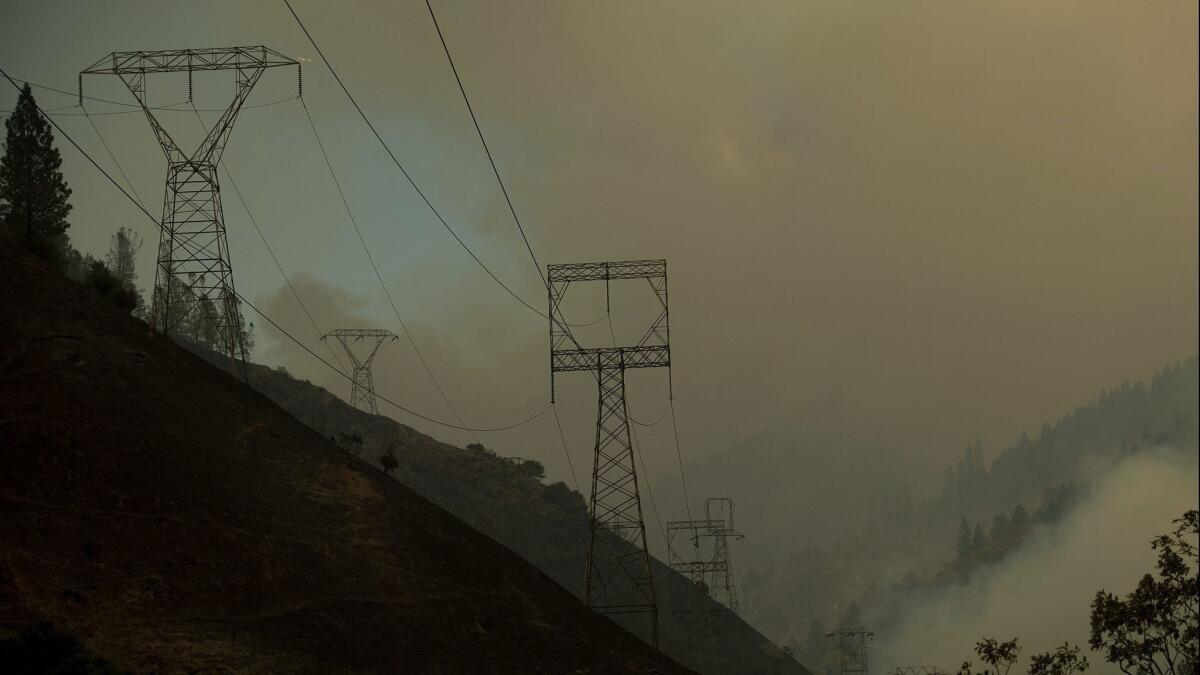Letters to the Editor: We can’t afford a utility that doesn’t shut down during high winds

- Share via
To the editor: Seems like everyone wants a perfect power grid, perfectly controllable and perfectly safe. Can it be done? Yes, absolutely. Could you afford it? Absolutely not. (“PG&E warns of 10 years of power shut-offs. California officials don’t like it,” Oct. 19)
Nothing in the electric utility industry is cheap or easy. Huge neighborhood-scale transformers are custom-designed and built. Automatic reclosers and capacitor banks on mountaintops will never be perfectly reliable. Raccoons and squirrels eat them or get fried in them. And, the California Public Utilities Commission would never allow rates to go up to what it would take to upgrade the grid to be perfectly safe.
The electric grid was designed for highest reliability at the cheapest rates possible, not custom flexibility and fail-safe emergency cutoffs. Utility management is correct: It would take decades to reverse that design philosophy, and the cost would be staggering.
The answer is not to make the electric grid spark-proof but to stop building houses in the wilderness to building codes that are applicable to the city. Fire-zone houses must be built to a different code, with fire resistance being foremost.
Whatever the solution, count on it being more expensive. There is no free lunch.
Harry Pope, Long Beach
..
To the editor: With the recent electric utility shutdowns due to the concern of sparking forest fires, and with the announced prospect of such shutdowns recurring for the next decade, this is a good time to consider a home solar system with a battery backup to handle grid failures.
Another green solution is an electric car with bi-directional charging that allows the owner’s home to be powered by the car battery when needed. Bi-directional charging is already available on some vehicle models.
Protecting the climate and being ready for electric grid failures go hand in hand.
Michael Schneider, Bloomfield Hills, Mich.
..
To the editor: The power companies contribute to the fire risk by deciding to place power lines on and through areas of high fire danger.
We have built tunnels under the oceans and through mountains. Here’s an idea to consider: Move the power lines underground.
There, they won’t spark fires, and the sheer ugliness of above-ground power lines will be gone.
Steve Fondiler, Oak Park
More to Read
A cure for the common opinion
Get thought-provoking perspectives with our weekly newsletter.
You may occasionally receive promotional content from the Los Angeles Times.









